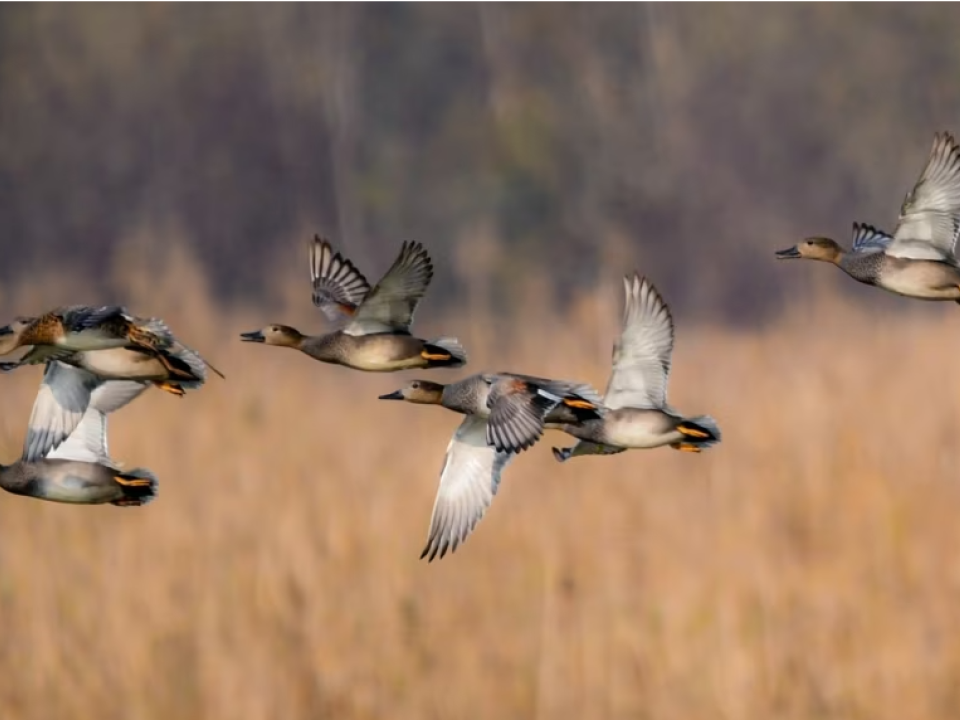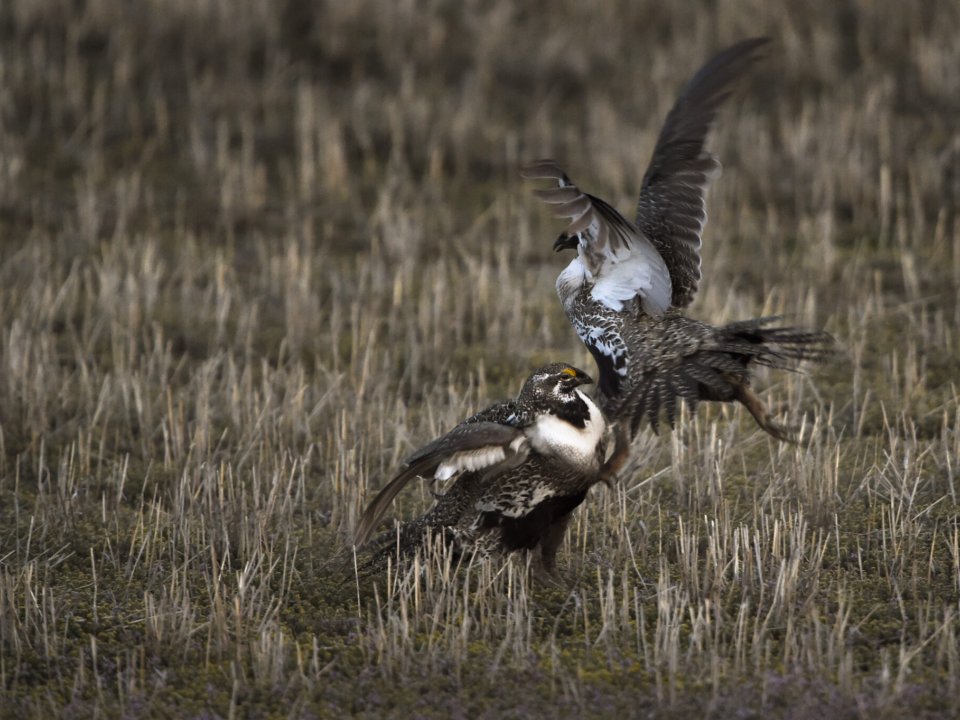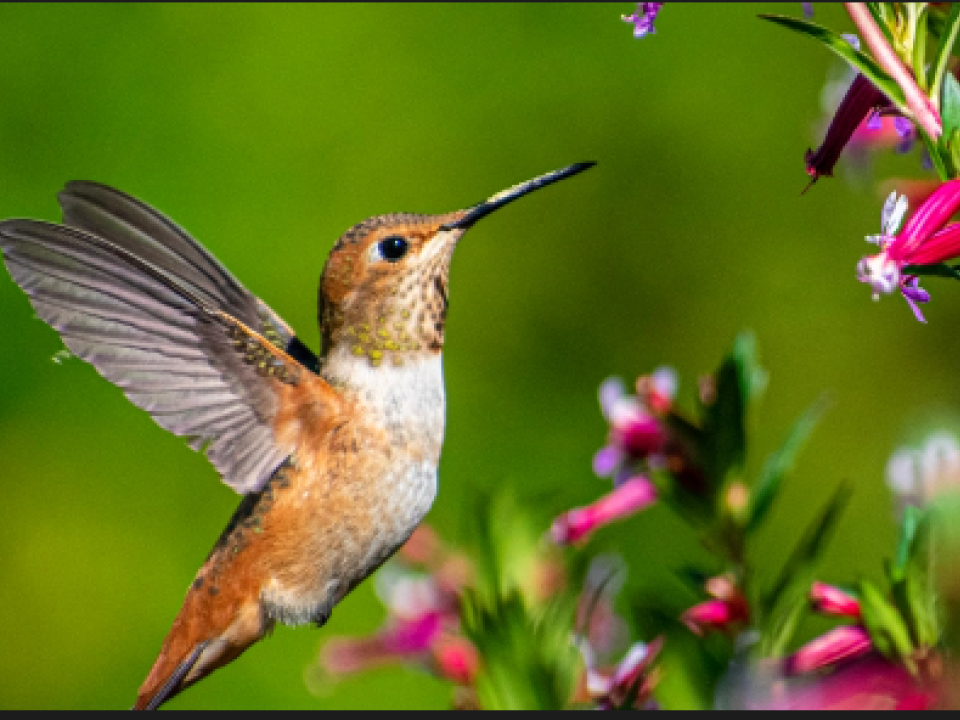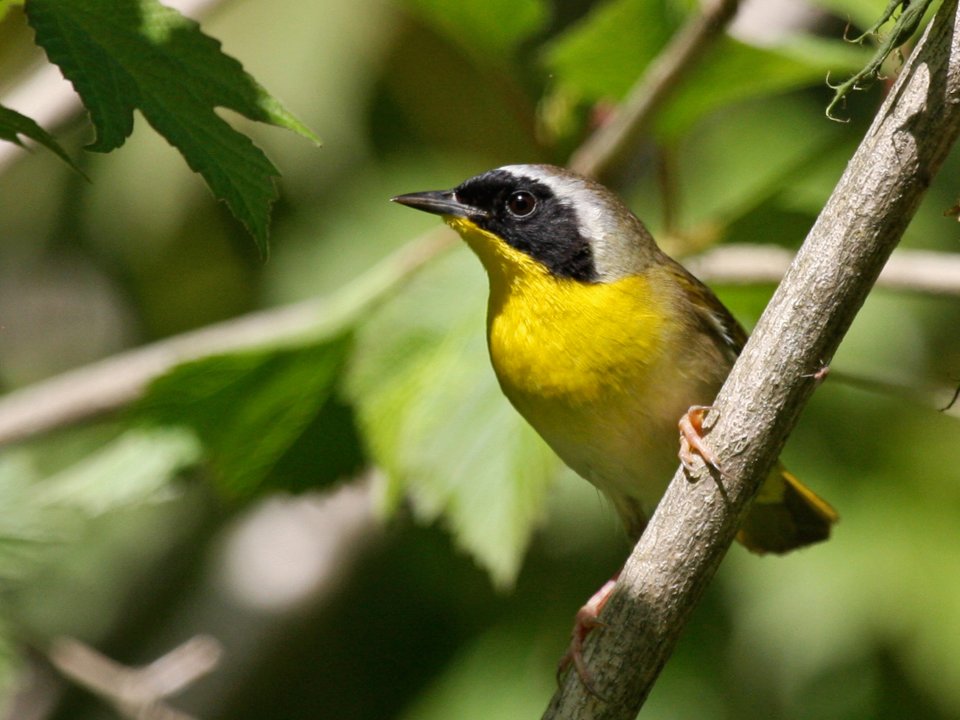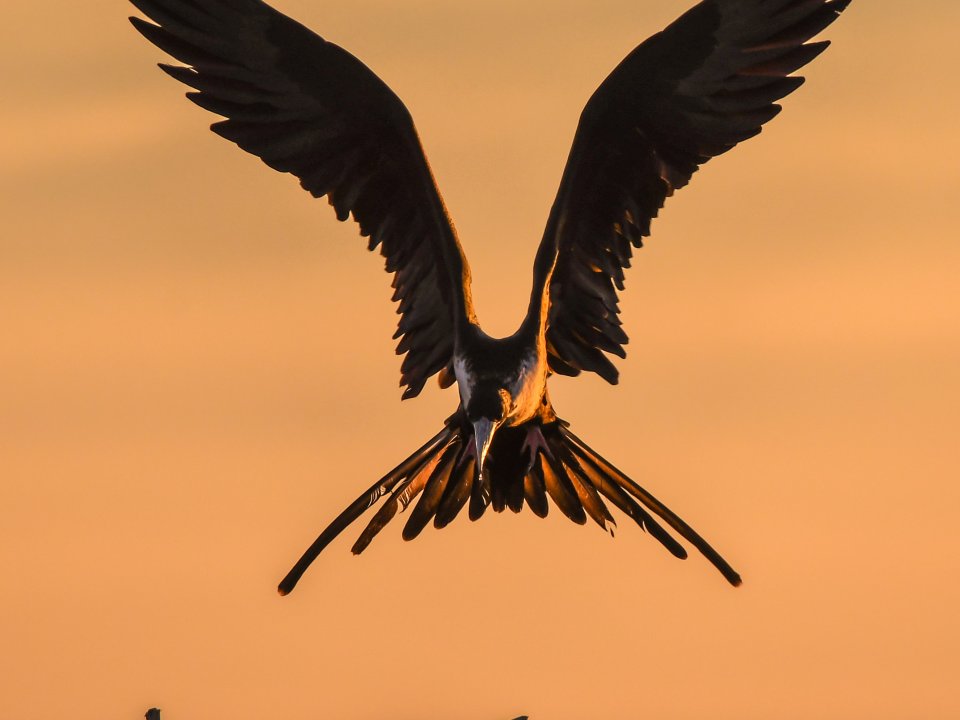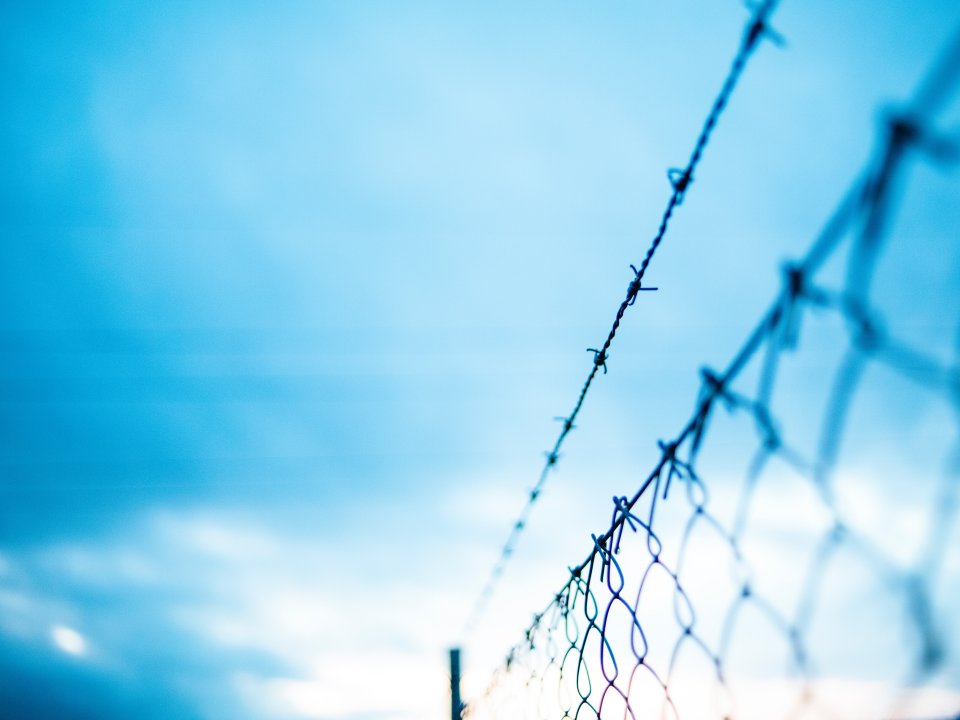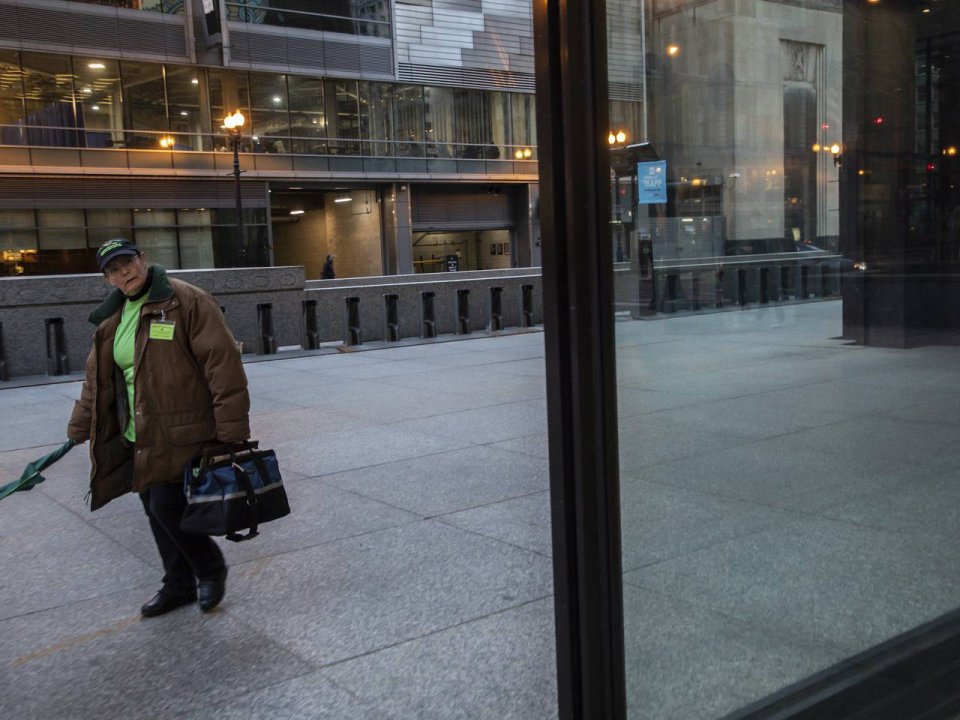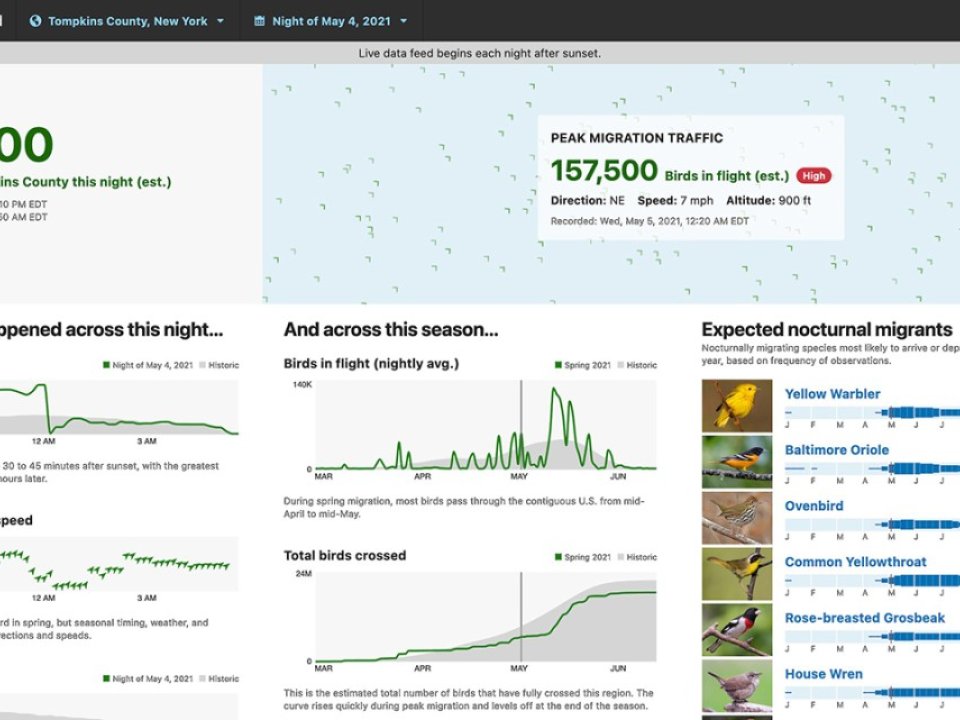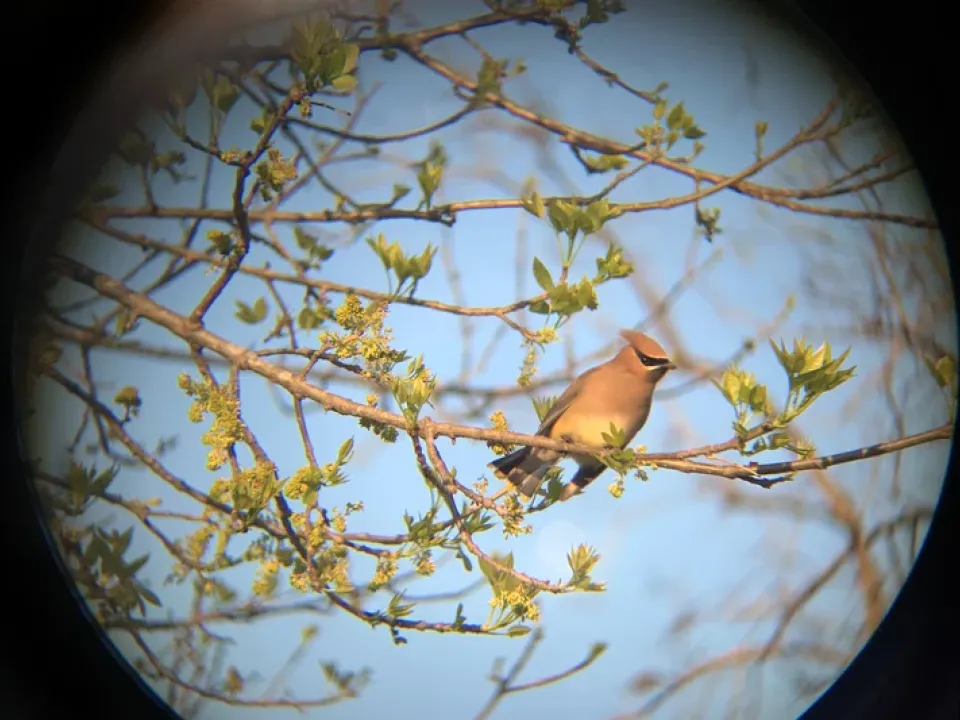News
The impact of Russia’s war in Ukraine is being felt as far away as Indian-administered Kashmir, where ornithologists like Cornell's Andrew Farnsworth see the conflict as contributing to a shortage of migratory birds which make their way each winter from Europe to the wetlands of the Kashmir Valley.
Farnsworth is a bird migration expert and senior research associate in Cornell's Lab of Ornithology.
A new report identifies 70 bird species that are at a “tipping point,” meaning that their populations have declined so significantly that they could face endangerment or even extinction in the coming years.
(NEXSTAR) – Amid a nationwide outbreak of avian flu, birds have had a hard year. But according to a report released Wednesday, many bird species have had a hard half-century, with the future not looking much brighter.
New York — Peak migration season saw nearly 2 million birds fly over New York Tuesday night, said the Cornell Lab of Ornithology, Ithaca, N.Y., but authorities stressed that light pollution continues to place a “significant impact” on the ability of birds to migrate safely at night.
CALIFORNIA’S WILDFIRE SEASON has kicked off in earnest, with the Oak Fire chewing extraordinarily quickly through the parched landscape around Yosemite National Park. The fire has burned nearly 17,000 acres so far, forcing thousands from their homes and blanketing the surrounding area in smoke.
“Connections are complicated,” says Amanda Rodewald, professor in the Lab of Ornithology and of natural resources. “In removing one species, it can be difficult to predict what the consequences are going to be for others in that system — we don’t know which species are going to be valuable to us someday.”
Migrations: A Global Grand Challenge has awarded grants totaling more than $500,000 to support faculty research addressing wide-ranging questions around domestic and global migration. Funded projects reflect the initiative’s interdisciplinary priorities of racism, dispossession, and migration in the U.S. and international, multispecies migration.
Conserving energy and stargazing are two of many reasons people opt to turn their lights out at night, but over the next couple of days, experts are urging residents to also flip their switches between 11 p.m. and 6 a.m. to help save the lives of millions of migrating birds.
The BirdCast program at the Cornell Lab of Ornithology is exploring bird migration – one of the greatest, mostly unseen spectacles of nature – with its new Migration Dashboard, which reveals bird movements in localized detail previously unavailable to the general public.
“With this new Migration Dashboard, you get facts and figures about what’s going on in the skies above you at the county level in near-real time,” said Andrew Farnsworth, senior researcher with BirdCast. “In recent years, we’ve been able to visualize and forecast the movements of migrating birds on a continent-wide scale, using weather surveillance radar.
“That's been fascinating, but now you can also get a feel for what’s going on in your own neck of the woods,” he said. “We want to elevate people’s abilities to understand bird migration, to talk about migration. There is tremendous potential for learning here. We don’t come close to knowing all the patterns that you will be able to explore when you look at this tool.”
I love this time of year, because that means lots of birds are migrating to their breeding grounds. I live along the Central Flyway migration corridor, so I get to see a lot of birds I usually don't see during non-migration months. Last spring, I was lucky enough to spot a Painted Bunting, a Blackburnian Warbler, and an Orchard Oriole, just to name a few!
But in North America, we've seen a staggering loss of birds. A 2019 study led by the Cornell Lab of Ornithology found that there are 3 billion fewer breeding birds than in 1970. To put that into context: we've lost roughly one in four birds over the course of my parents' lifetime. More than 90% of these losses are of common birds, like sparrows, blackbirds and finches.

